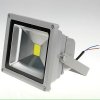Slipon
Well-Known Member
maybe use a separate driver for the 660, that way you can also turn em on after the stretch (first 2-3 weeks of flowering) and save some power in the early growth where it is`t need as much as in full flowering
2600-3700K sounds good but 67 lm less is like 20% less
IMO optic is`t that important, if you only intent to grow short auto`s or use a scrog method or similar, I have one panel with and one with out, the one with out do great, just keep it at 10-20cm instead of the 40cm I keep them with optic on, at 25cm I actually get light belch with the optic at 10cm with out I don't, just that lower Bud`s get less light, but they do anyway as you have to keep it at 40cm, atleast get some that spread the light out a lot like 120 degree angle, if it was me I would use the money "saved" on the optic to just trow in more LEDs, and I would also make sure to spread em out over my hole grow, either by making a hugh panel or a few smaller once, a small "ufo" could work great for each plant, looking back I would rater have that then one big panel as it don't spread the light like big HIDs
just my experience
2600-3700K sounds good but 67 lm less is like 20% less
IMO optic is`t that important, if you only intent to grow short auto`s or use a scrog method or similar, I have one panel with and one with out, the one with out do great, just keep it at 10-20cm instead of the 40cm I keep them with optic on, at 25cm I actually get light belch with the optic at 10cm with out I don't, just that lower Bud`s get less light, but they do anyway as you have to keep it at 40cm, atleast get some that spread the light out a lot like 120 degree angle, if it was me I would use the money "saved" on the optic to just trow in more LEDs, and I would also make sure to spread em out over my hole grow, either by making a hugh panel or a few smaller once, a small "ufo" could work great for each plant, looking back I would rater have that then one big panel as it don't spread the light like big HIDs
just my experience


